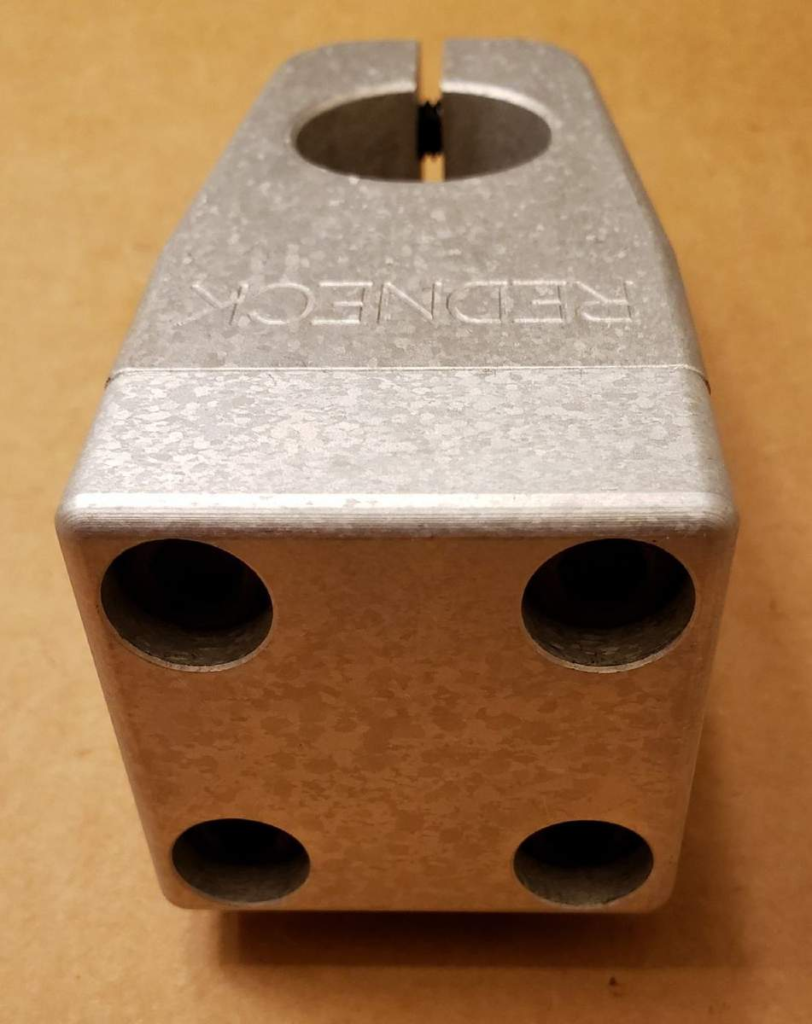
To darken aluminum, you can use various methods, including anodizing, staining, chemical darkening, and electro-colouring. In this article, we will look into the question “How to darken aluminium?”
- How to darken aluminium?
- What is the difference between chemical darkening and electro-colouring?
- what are the advantages of electro-colouring over chemical darkening?
- what are some common applications for darkened aluminum?
- what are some benefits of using darkened aluminum in construction?
- what are some safety precautions to take when darkening aluminum?
- how to remove dark stains from aluminum after darkening it?
- what are some common causes of dark stains on aluminum?
- Helpful Resources
How to darken aluminium?
Here are the steps for each method:
1. Anodizing, staining, and sealing:
- Clean the aluminum with a solvent that leaves no residue, such as lacquer thinner, acetone, or alcohol.
- Abrade the aluminum surface if discoloration from oxidation is present.
- Apply a stain to the aluminum and let it sit for a few hours.
- Seal the aluminum with lacquer or wax to preserve the darkened finish.
2. Chemical darkening:
- Clean the aluminum with a solvent that leaves no residue.
- Abrade the aluminum surface if discoloration from oxidation is present.
- Apply a thin coat of chemical aluminum darkener onto the surface of the aluminum according to the manufacturer’s instructions.
- Observe the chemical reaction and reapply another coat of the chemical darkener over the first one until a uniform darkened finish appears on the aluminum.
- Neutralize the chemical reaction by dipping a natural sponge in warm water and squeezing out excess water. Sponge off the chemical darkener with the damp sponge, frequently rinsing the sponge in clean water. Mix 2 tablespoons of baking soda in a gallon of warm water to rinse large or complex aluminum surfaces.
- Dry the aluminum with compressed air or a hair dryer set to warm.
3. Electro-colouring:
- Anodize the aluminum product.
- Introduce the anodized aluminum product to inorganic metallic salts through an electrolyte.
- Observe the color change and adjust the process as needed to achieve the desired shade.
Each method has its advantages and disadvantages, and the specific method chosen will depend on the desired outcome and the resources available. It is essential to follow safety precautions when darkening aluminum to avoid potential health risks associated with chemical exposure.
What is the difference between chemical darkening and electro-colouring?
The difference between chemical darkening and electro-colouring lies in the processes and substances involved in altering the color of anodized aluminum.
Chemical darkening typically entails the application of a chemical darkener to prematurely age the aluminum, while electro-colouring involves introducing the anodized aluminum product to inorganic metallic salts through an electrolyte.
The anodized aluminum product becomes one electrolyte, and graphite (or aluminum) becomes the other. The oxide or hydroxide precipitates in the pores, adding colors such as black, brown, blue, yellowish grey, and bronze to the film.
On the other hand, chemical darkening is achieved by applying a thin coat of the chemical aluminum darkener onto the surface of the aluminum and observing the chemical reaction. The specific method chosen will depend on the desired outcome and the resources available.
what are the advantages of electro-colouring over chemical darkening?
The advantages of electro-colouring over chemical darkening include:
1. Color Stability: Electrolytic coloring deposits are more resistant to fading when exposed to UV light, such as sunlight, compared to organic dyes.
2. Durability: The finish obtained through electrolytic coloring offers unsurpassed light fastness, heat fastness, weather fastness, and chemical resilience, making it a durable option, especially for architectural applications.
3. Energy Efficiency: Electrolytic coloring is an energy-efficient means of producing an aluminum finish, making it a more sustainable option.
4. Color Customization: Electro-colouring allows for different coloring finishes to be achieved, offering a range of color options for the anodized aluminum product.
5. Resistance to Corrosion: Certain electrolytic coloring processes, such as cataphoretic electrocoating, provide superior corrosion resistance, adding a protective coat against corrosion.
These advantages make electro-colouring a preferred method for achieving colored finishes on anodized aluminum, especially in applications where color stability, durability, and energy efficiency are important.
what are some common applications for darkened aluminum?
Some common applications for darkened aluminum include:
1. Aesthetic Finishes: Darkening aluminum can be used to achieve a cool, gunmetal gray look, giving the metal a darker and more aged appearance, which is often desired in various artistic and industrial applications.
2. Replica Items and Metal Sculptures: Creators of replica items and metal sculptors sometimes wish to make metal objects look aged, and darkening aluminum can be a part of the process to achieve this effect.
3. Automotive Customization: Darkened aluminum is used in automotive customization, such as darkening wheels or other aluminum parts to achieve a specific aesthetic or vintage look.
4. Model Building: In model building, darkened aluminum can be used to create realistic and aged finishes on various metal parts and components.
5. Industrial and Mechanical Applications: Darkened aluminum may be used in industrial and mechanical applications where a specific aesthetic or functional requirement calls for a darker finish.
These applications demonstrate the versatility of darkened aluminum in various fields, from artistic and aesthetic uses to practical and functional applications.
what are some benefits of using darkened aluminum in construction?
Using darkened aluminum in construction offers several benefits, including:
1. Aesthetic Appeal: Darkened aluminum can provide a unique and visually appealing look, making it a popular choice for architectural and design projects.
2. Durability: Darkened aluminum is resistant to corrosion and weathering, making it a suitable material for outdoor applications and harsh environments.
3. Energy Efficiency: Darkened aluminum can help reduce heat gain in buildings, as darker colors absorb more heat than lighter colors, leading to energy savings in cooling.
4. Sustainability: Aluminum is a recyclable material, and using darkened aluminum in construction can contribute to a more sustainable and environmentally friendly building process.
5. Versatility: Darkened aluminum can be used in various applications, such as cladding, roofing, and facade systems, providing architects and builders with a flexible and adaptable material choice.
6. Cost-Effective: Darkening aluminum can be achieved through various methods, such as anodizing, staining, and chemical darkening, which can be more cost-effective compared to other materials.
These benefits make darkened aluminum a valuable option for construction projects, offering a combination of aesthetic, functional, and environmental advantages.
what are some safety precautions to take when darkening aluminum?
When darkening aluminum, it is important to take certain safety precautions. Here are some common safety measures to consider:
1. Use protective equipment: When working with chemical darkeners or other substances, wear appropriate personal protective equipment, such as gloves, safety goggles, and a mask, to prevent skin contact and inhalation of fumes.
2. Work in a well-ventilated area: Ensure that the darkening process is carried out in a well-ventilated space to minimize exposure to potentially harmful fumes or vapors.
3. Handle chemicals carefully: Follow the manufacturer’s instructions for the application of chemical darkeners and other substances. Store and dispose of chemicals according to safety guidelines.
4. Clean and neutralize effectively: After the darkening process, thoroughly clean the aluminum and neutralize any chemical reactions to ensure the safety of the finished product and those who handle it.
5. Prevent water staining: To avoid water staining or discoloration of the aluminum, ensure that the metal is thoroughly dried after the darkening process and take steps to prevent moisture exposure.
By following these safety precautions, the darkening of aluminum can be carried out effectively and responsibly.
how to remove dark stains from aluminum after darkening it?
To remove dark stains from aluminum after darkening it, you can follow these steps:
1. Clean the aluminum: Use a solvent that leaves no residue, such as lacquer thinner, acetone, or alcohol, to clean the aluminum surface. Avoid solvents like kerosene or white spirit, as they leave residue and should not be used.
2. Abrade the aluminum surface: If there is discoloration from oxidation, use an abrasive pad or other method to abrade the surface.
3. Neutralize the chemical reaction: To neutralize the chemical reaction, dip a natural sponge in warm water and squeeze out excess water. Sponge off the chemical darkener with the damp sponge, frequently rinsing the sponge in clean water. Mix 2 tablespoons of baking soda in a gallon of warm water to rinse large or complex aluminum surfaces.
4. Dry the aluminum: Dry the aluminum with compressed air or a hair dryer.
5. Remove the dark stains: If the dark stains are still present, you can try the following methods:
- Wet a plastic scouring pad in soapy water and scrub the aluminum surface vigorously.
- Cover the stained area with a mixture of tartar, vinegar, and water, and let it sit for a few hours before rinsing it off.
- Use a non-abrasive scrubbing pad to gently scrub the aluminum surface, focusing on the darkened areas.
6. Polish the aluminum: If you want to improve the appearance of your aluminum, invest in a commercial metal polish to bring out the shine.
Remember that it is essential to use a prepared commercial chemical for aluminum darkening, as household chemicals may not be effective.
what are some common causes of dark stains on aluminum?
Some common causes of dark stains on aluminum include:
1. Heat exposure: Prolonged exposure to high heat can cause aluminum to discolor and blacken, especially when cooking at very high temperatures or when cooking acidic foods like tomatoes or sour sauces in an aluminum pan.
2. Chemical reactions: Aluminum can react with certain chemicals, leading to dark stains. For example, incorrect cleaning methods, such as not drying a pan properly after cleaning it with hard water or cleaning aluminum cookware in the dishwasher, can cause mineral deposits to build up and trigger a reaction that darkens the metal.
3. Oxidation: Aluminum is extremely reactive and can form aluminum oxide or aluminum rust, which can lead to black stains on the aluminum, especially if the oxide builds up over time.
To remove these dark stains, it’s important to use the appropriate cleaning methods and, if necessary, to neutralize any chemical reactions that may have caused the staining.
Helpful Resources
- https://www.ehow.co.uk/how_8646670_darken-aluminum.html
- https://bosslaser.com/darkening-aluminum-safely/
- https://www.therpf.com/forums/threads/how-do-i-age-aluminum.17201/
- https://www.finishing.com/432/48.shtml
- https://finishingandcoating.com/index.php/anodizing/809-electrolytic-coloring-of-anodized-aluminum
- https://mstchemicals.com/related-activities/
- https://www.jalopyjournal.com/forum/threads/darkening-aluminum-experiment.1288692/
- https://www.finescalerr.com/smf/index.php?topic=1840.0
- https://www.therpf.com/forums/threads/darkening-aluminum.338981/
- https://orchid.ganoksin.com/t/any-tips-for-creating-a-dark-patina-on-aluminum/43099
- https://sayfa.com.au/how-to-prevent-aluminium-discolourisation/
- https://www.ehow.co.uk/how_7744371_remove-black-stains-aluminum.html
- https://schaumburgspecialties.com/how-to-remove-oxidation-from-aluminum-stepbystep-instructions/
- https://www.marthastewart.com/7976833/how-clean-blackened-aluminum-pan
- https://thecorrecter.com/do-aluminium-boats-need-anodes/
- https://thecorrecter.com/does-aluminium-corrode-in-water/
- https://thecorrecter.com/how-to-remove-oxidation-from-aluminium-engine/
- https://thecorrecter.com/how-to-stop-electrolysis-on-aluminium-boat/
- https://thecorrecter.com/how-to-stop-corrosion-on-aluminium-boats/
- https://thecorrecter.com/does-aluminium-oxidize/
- https://thecorrecter.com/how-to-fix-aluminium-window-hinges/
- https://thecorrecter.com/how-to-insulate-aluminium-window-frames/
- https://thecorrecter.com/can-aluminium-be-brazed/
- https://thecorrecter.com/how-to-stop-condensation-on-aluminium-window-frames/
- https://thecorrecter.com/how-to-melt-aluminium-without-a-foundry/
- https://thecorrecter.com/is-aluminium-dust-harmful/
- https://thecorrecter.com/is-aluminium-oxide-ionic-or-covalent/
- https://thecorrecter.com/is-aluminium-foil-a-good-insulator-of-heat/
- https://thecorrecter.com/is-aluminium-monatomic-or-diatomic/
- https://thecorrecter.com/can-aluminium-be-magnetised/
- https://thecorrecter.com/what-to-do-if-you-accidentally-eat-aluminum-foil/
- https://thecorrecter.com/is-aluminium-toxicity-reversible/
- https://thecorrecter.com/what-size-aluminium-wire-for-125-amp-service/
- https://thecorrecter.com/can-you-put-aluminium-foil-in-an-air-fryer/
- https://thecorrecter.com/is-aluminium-malleable-and-ductile/
